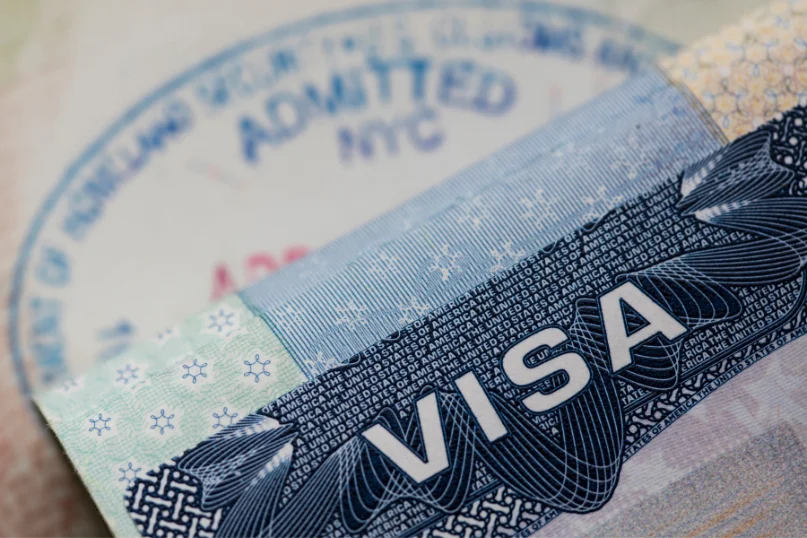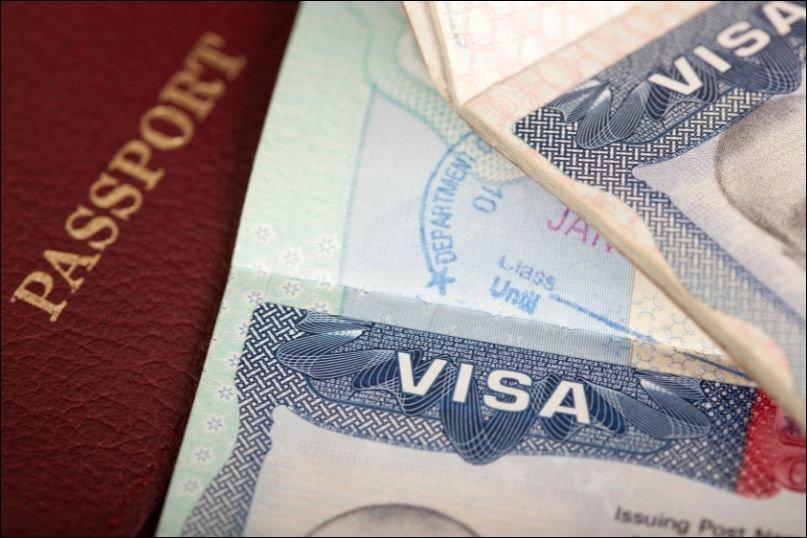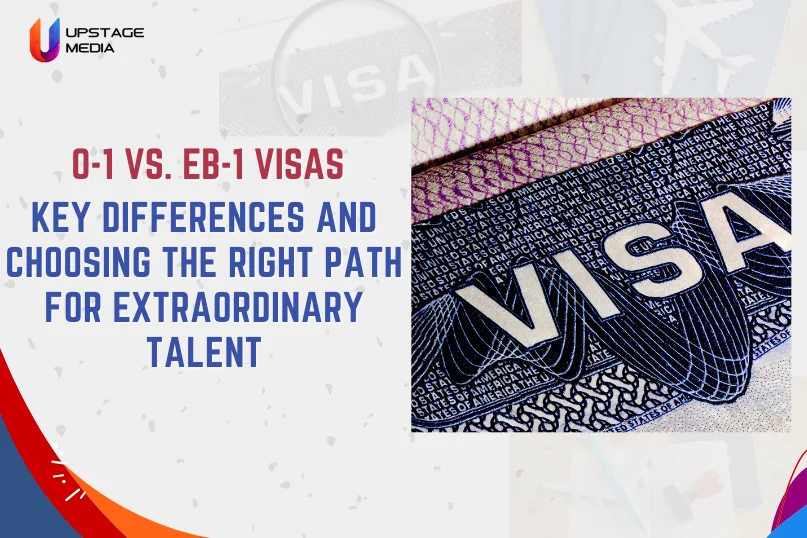Table of Contents
Recently updated on October 7th, 2024
Introduction
Do you know that immigration provides more opportunities for exceptional talent, particularly in the US? Fact is that the most common ones are O-1 and EB-1 visas. While both recognize highly talented workers in their fields, they do have different purposes and immigration restrictions. Knowing the difference between these is essential for individuals who wish to successfully interact with U.S. immigration laws. This article discusses the main differences that distinguish O-1 from EB-1 visas, their eligibility conditions, and which one is the best option for immigration of exceptional talent.

O-1 Visa Overview
Purpose and Eligibility Criteria
An O-1 is a non-immigrant work visa for extraordinary achievement in education, business, athletics, the arts, or sciences. The candidates eligible for this kind of work visa need to show their recognition and admiration that is national or global in their area. Awards, publications, newspaper coverage, and other recognition may prove it. The EB-1A visa is for those who have shown their special abilities in case of science, arts, athletics, business and education. On the other hand the EB-1B visa is for those researchers and professors who wish to work while staying in USA on permanent basis.
Duration and Renewal Options
O-1 visas are usually for three years in the event, performance, or activity and have one-year extensions. O-1 is flexible for those undertakings that do not need long-term commitment to it.
Key Advantages
An advantage of the O-1 is that it does not require employer sponsorship. Holders may work for themselves or others if the assignment fits within their expertise. The O-1 visa holder may bring dependents (O-3 visas) into the country.

EB-1 Visa Overview
Three Subcategories: EB-1A, EB-1B, and EB-1C
EB-1 allows the immigration of talented people on a permanent basis. The subcategories include EB-1A for highly talented individuals, EB-1B for notable educators and researchers, and EB-1C for international leaders and managers. Each division thus has different characteristics and suits different professional situations.
The subclasses all have different requirements under EB-1. No job offer is required, but EB-1A applicants must demonstrate national or international recognition. They also must demonstrate that their admission will substantially benefit their profession in the United States. The EB-1B subclass applicants need to have an outstanding academic record, a job offer letter from a U.S. employer, and proof of excellence. EB-1C applies to those multinational executives and managers who, in the last three years, have had work experience from a foreign company with a qualifying relationship with a U.S. company. Indeed, the candidate must be employed by such a foreign company for at least one continuous year out of the last three years.
Benefits of Permanent Residence

One of the striking features the EB-1 visa offers is that of a green card. This relieves holders from constraints imposed by non-immigrant visas to reside and work in the country. EB-1 visa holders are also allowed to apply for family reunification and bring qualified relatives to the US.
Key Differences
Temporary vs. Permanent Status
The Most Fundamental Difference
The main distinction between EB-1 and O-1 is achieved by the very purpose. As to working in the US for a certain period, one can make use of a temporary non-immigrant visa, such as O-1. For long-term stability and stay in the US, an immigrant visa, the EB-1, leads to permanent residence.
Application Process and Timeline
In general terms, an application for an O-1 is easier and faster when compared to an EB-1. The application procedure for the O-1 visa is short and takes weeks to a few months, depending on the scenario and processing dates. The EB-1 visa applications are tougher and may take multiple months to about a year. The longer period in processing is because of the bulky documentation needed to prove eligibility and due to waiting periods for green cards, especially where applicants are from a high-demand country.
Evidentiary Standards
The main proof is destined to differ between the O-1 and the EB-1 applicants, even though both are anticipated to showcase extraordinary ability in their fields. Criteria for permanent residency are also much harsher for the EB-1 visa and require much more voluminous documentation. An individual must demonstrate extensive evidence of continuing recognition and capability for advancing the interest of the profession in the US. Although it is highly liberal, the standards are very high, which allows for more ease in granting an O-1 visa or the extraordinary ability visa, especially to those with so many achievements but with a lack of documents.
Sponsorship Requirements
Sponsor requirements will be different with different visa types. The O-1 does not require employer sponsorship, which simply means holders have a wider range of job opportunities open to them. They do not face the need to obtain a new visa in case of changes in their job. In contrast, the EB-1B subclass requires a pre-established US job offer. In such cases, sponsorship may become an issue for those without stable employment in the US.
Choosing the Right Path
Factors to Consider
Case-by-case specifics determine whether to pursue an EB-1 or O-1 visa. Candidates should consider what kind of goals they have for their careers, permanent residency, and time constraints. If you meet the standards of EB-1 and you would like to work in the US on a permanent basis, this might prove to be a helpful avenue. Urgent project needs and frequent project transfers may see the O-1 visa as more viable.
Scenarios Favoring O-1 Visa
For work in the US on a temporary basis, the O-1 visa is generally preferred, especially for rising professionals or those with limited time. It is the perfect visa for individuals who have an enormous amount of experience but not enough papers to apply for an EB-1. Artists, performers, and all others who are working on projects that are short-term in nature benefit from this. The O-1 allows holders to undertake employment in the US on a number of projects without permanent status.
Scenarios Favoring EB-1 Visa
The EB-1 visa is ideal for those who wish to live permanently in the US and can boast nationwide or even worldwide acclaim in their field. This visa favors experienced academics, researchers, and executives at multinational businesses who intend to create professions and lives in the US. This EB-1 visa provides an easy way to get a green card for those aliens who want to live in the US and are able to prove their talents and achievements.
Application Strategies

Documentation and Evidence Gathering
Regardless of the preference of O-1 or EB-1, there is paperwork to be filled out. O-1 visa applicants would have had to put together awards, critiques, press, and other evidence of achievement, but not to the extent of EB-1. EB-1 requires even a larger portfolio demonstrating exceptional ability, showing leading reputation, and indicating substantial business or scientific work. The outcome of the application would depend heavily on the detailed and strong documentation derived from the great number of sources related to the case.
Importance of Strong Recommendation Letters
Local recommendations from renowned experts can support the O-1 or EB-1 immigration application. These letters should project the applicant’s accomplishments, influence, and place within the peer group. The more effective and focused the visa petition recommendations are, the greater the chance of success will be.
Navigating the Petition Process
The process of filing for either visa is complicated, and therefore the help of an experienced immigration attorney is necessary. Legal assistance is useful in ascertaining the preparation of forms, submission of all relevant documents, and beneficial information regarding US immigration legislation. An attorney also offers tactical advice based on the applicant’s position in order to increase acceptance rates.
Transitioning from O-1 to EB-1
Potential Benefits and Considerations
Most individuals prefer the O-1 approach since there is more flexibility and times of clearance are shorter. Eventually, the EB-1 visa will lead to permanent residency. The supporting documentation is different, and applicants must be advised on this accordingly.
Timeline and Process Overview
The switching process generally involves the filing of an EB-1 petition on an O-1 visa. Since immigration proceedings are not easy to deal with, applicants should plan their relocation well in advance to avoid gaps in their allowed presence.
Conclusion
Although both the O-1 and EB-1 have the purpose of bringing highly talented personnel, they take different routes to residency: temporary versus permanent. These factors are important in order for individuals to make informed decisions with regard to their immigration desires. The environment calls for counsel with experience and a well-set application in order to meet one’s needs and aspirations as a professional.
